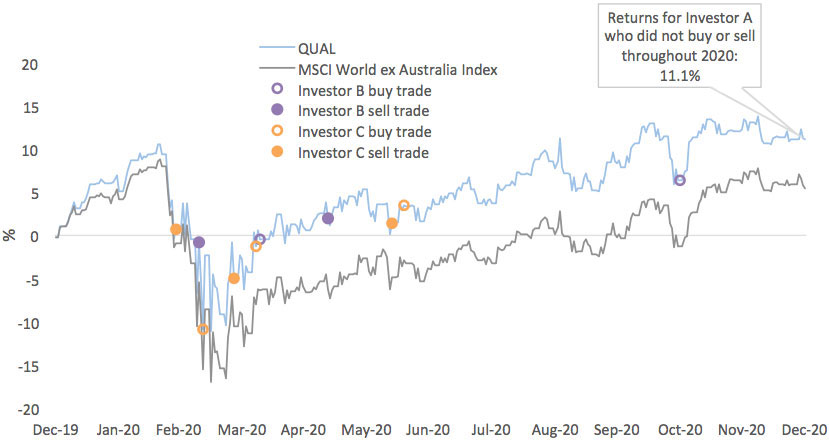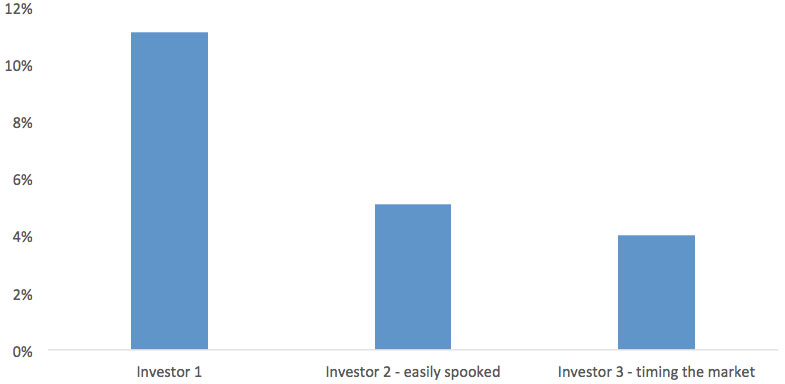The lessons of crises.
Hamilton, the musical, recently had its Australian premiere in Sydney and a Melbourne season has been announced. It is based on the life of Alexander Hamilton, the first Secretary of the Treasury, who was responsible for the economic policies of Washington’s administration.
It was during George Washington’s first term that a battle of words captivated the public as a series of back and forth essays (way longer than Twitter’s 280 characters) appeared in the press about executive power, debt and the central bank. The ‘trolling’ included personal barbs between Hamilton and future President Thomas Jefferson. When in power, Jefferson didn’t force the closure of Hamilton’s First Bank of America; that was President Madison.
The current incarnation of the US Federal Reserve System emerged prior to World War One after the ‘Panic of 1907’. Since then it has been a key player during periods of economic turbulence. And while central bankers throughout history have played from different playbooks in response to crises – the lesson for investors in a crisis is a simple one.
During George Washington’s first term a battle of words captivated the public as a series of back and forth essays (way longer than Twitter’s 280 characters) appeared in the press about executive power, debt and the central bank. The ‘trolling’ included personal barbs between Hamilton and future President Thomas Jefferson. When in power, Jefferson didn’t force the closure of Hamilton’s First Bank of America; that was President Madison.
The current incarnation of the US Federal Reserve System emerged prior to World War One after the ‘Panic of 1907’. Since then it has been a key player during periods of economic turbulence. And while central bankers throughout history have played from different playbooks in response to crises – the lesson for investors in a crisis is a simple one.
Stock markets are fairly good at pricing in demand trends, earnings expectations, technology innovations and many other things. However, one thing markets have great difficulty putting a price on is uncertainty. It was stock market barons, primarily from the banking sector, who warned of a looming crisis in the early 1900s as the US operated without a central bank. Notably, future Federal Reserve Board member, Paul Warburg wrote the prescient “A Plan for a Modified Central Bank” which was published in the New York Times in early 1907.
In October the “Panic of 1907” had hit. The bipartisan US Federal Reserve System was created with the enactment of the Federal Reserve Act in 1913.
Last year as the threat of COVID-19 and subsequent lock downs hit, stock markets reacted with unprecedented velocity. The falls were extreme and fast. Central banks reacted. So did many investors.
When markets fall, it is understandable that investors get spooked and flee the market. However, this can result in losses and prevent investors from reaping the rewards when the market rebounds. 2020 provided a text book lesson. Investors that remained fully invested were rewarded.
Government and central banks, many still managing inflation and economic hangovers from the GFC, didn’t waste any time in 2020, stepping up to preserve jobs and stabilise the economy. As a result markets rebounded unpredictably, almost as quickly as they fell,
Most investors understand the importance of remaining invested during the down times and, most importantly, through the rebounds, but finding those strategies that outperform ‘through the cycle’ can be difficult.
This is why ‘factor’ investing is becoming popular. MSCI has illustrated how its factors such as Quality and its Enhanced Value outperform the market capitalisation benchmarks through the cycle. ETFs allow investors to invest in strategies that target these factors and savvy investors have being using them to invest for the long-term, achieving long term outperformance with lower costs.
2020/21 provides an extreme example of the importance remaining invested. Let’s look at a range of hypothetical scenarios where four different investors have $1,000 at the start of 2020 in the VanEck Vectors MSCI World ex Australia Quality ETF (QUAL). The chart below shows the returns of QUAL through 2020 with the trading activity of three types of investors. This is for illustrative purposes only.
2020 calendar year returns

Source: Morningstar Direct, VanEck. The chart above shows past performance of QUAL and of the MSCI World ex Australia Index over 12 months in 2020 to reflect a recent relevant volatile time period: QUAL's full performance history can be found here. You cannot invest directly in an index. Results are calculated to the last business day of the month and assume immediate reinvestment of distributions. QUAL results are net of management fees and other costs incurred in the fund, but before brokerage fees and bid/ask spreads incurred when investors buy/sell on the ASX. Returns for periods longer than one year are annualised. Past performance is not a reliable indicator of future performance. The MSCI World ex Australia Index (“MSCI World ex Aus”) is shown for comparison purposes as it is the widely recognised benchmark used to measure the performance of developed market large- and mid-cap companies, weighted by market capitalisation. QUAL’s index measures the performance of 300 companies selected from MSCI World ex Aus based on MSCI quality scores, weighted by market cap x quality score at rebalance. Consequently QUAL’s index has fewer companies and different country and industry allocations than MSCI World ex Aus.
In January 2020 COVID-19 had barely spread beyond Wuhan. Markets were rising. Then markets panicked.
- Investor A had the discipline to stay in QUAL throughout the volatility of 2020. At the end of the year she had $1,111, a return of 11.1%.
- Investor B is easily spooked. He sold immediately after the fall in February. He then re-entered the market one month later, but true to form he sold at the next sign of volatility in May. The rises and falls in June through to November spooked him, but he captured November and December’s positive months. In all, Investor B executed four trades. Investor B had $1,051 at the end of 2020, a return of a 5.1% excluding the costs of trading.
- Investor C tried to time the market, she sold out in February. She vowed to enter again following a daily market rise greater than 3%, and exited following the same rule. She finished the year with $1,040 (4% return) not including the costs of the transactions.
It is worthwhile noting both investor B and C avoided the depths of the falls, but this did not help them.
The importance of remaining invested throughout the 2020 volatility

Source: Morningstar Direct, VanEck. Results are calculated daily to the last business day of the month and assume immediate reinvestment of all dividends. QUAL results are net of management costs but do not include brokerage costs of investing in QUAL. Past performance is not a reliable indicator of future performance.
This shows that if you try to time the market and get it wrong you would be significantly worse off than if you stayed invested for the duration. The probability of correctly timing the market is low. As the old adage says, investing is about “time in the market, not timing the market.”
Published: 18 June 2021
IMPORTANT NOTICE:
VanEck Investments Limited ACN 146 596 116 AFSL 416755 (‘VanEck’) is the responsible entity and issuer of units in the VanEck Vectors ETF's. This is general advice only, not personal financial advice. It does not take into account any person’s individual objectives, financial situation or needs. Read the PDS and speak with a financial adviser to determine if the fund is appropriate for your circumstances. The PDS is available here. This is general advice only, not personal financial advice. Read the PDS and speak with a financial adviser to determine if a fund is appropriate for your circumstances. The PDS is available at www.vaneck.com.au.
An investment in QUAL has risks, including possible loss of capital invested. QUAL carry risks associated with: financial markets generally, individual company management, industry sectors, ASX trading time differences, foreign currency, country or sector concentration, political, regulatory and tax risks, fund operations and tracking an index. See the PDS for details. No member of the VanEck group guarantees the repayment of capital, the payment of income, performance, or any particular rate of return from either fund.




